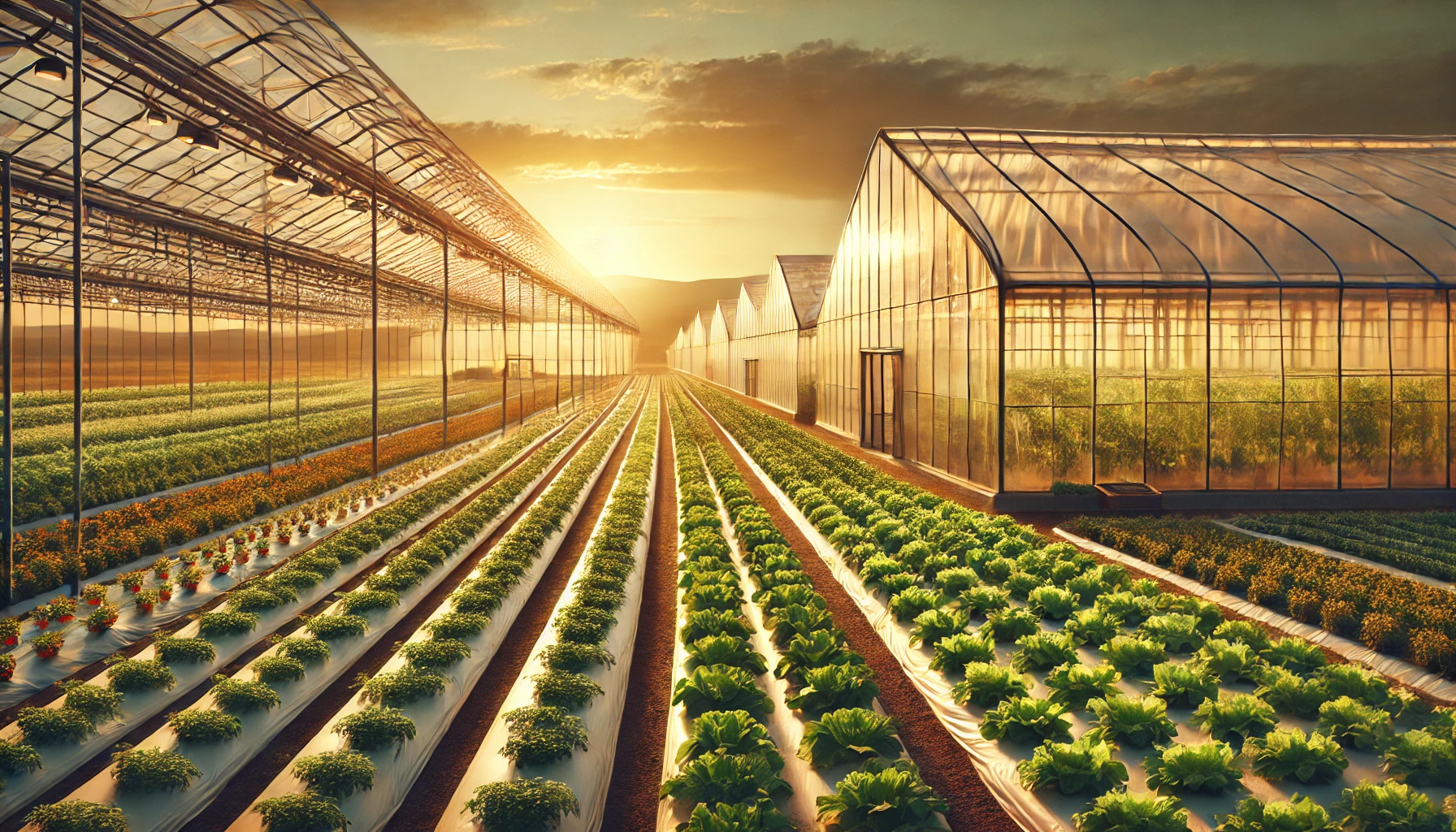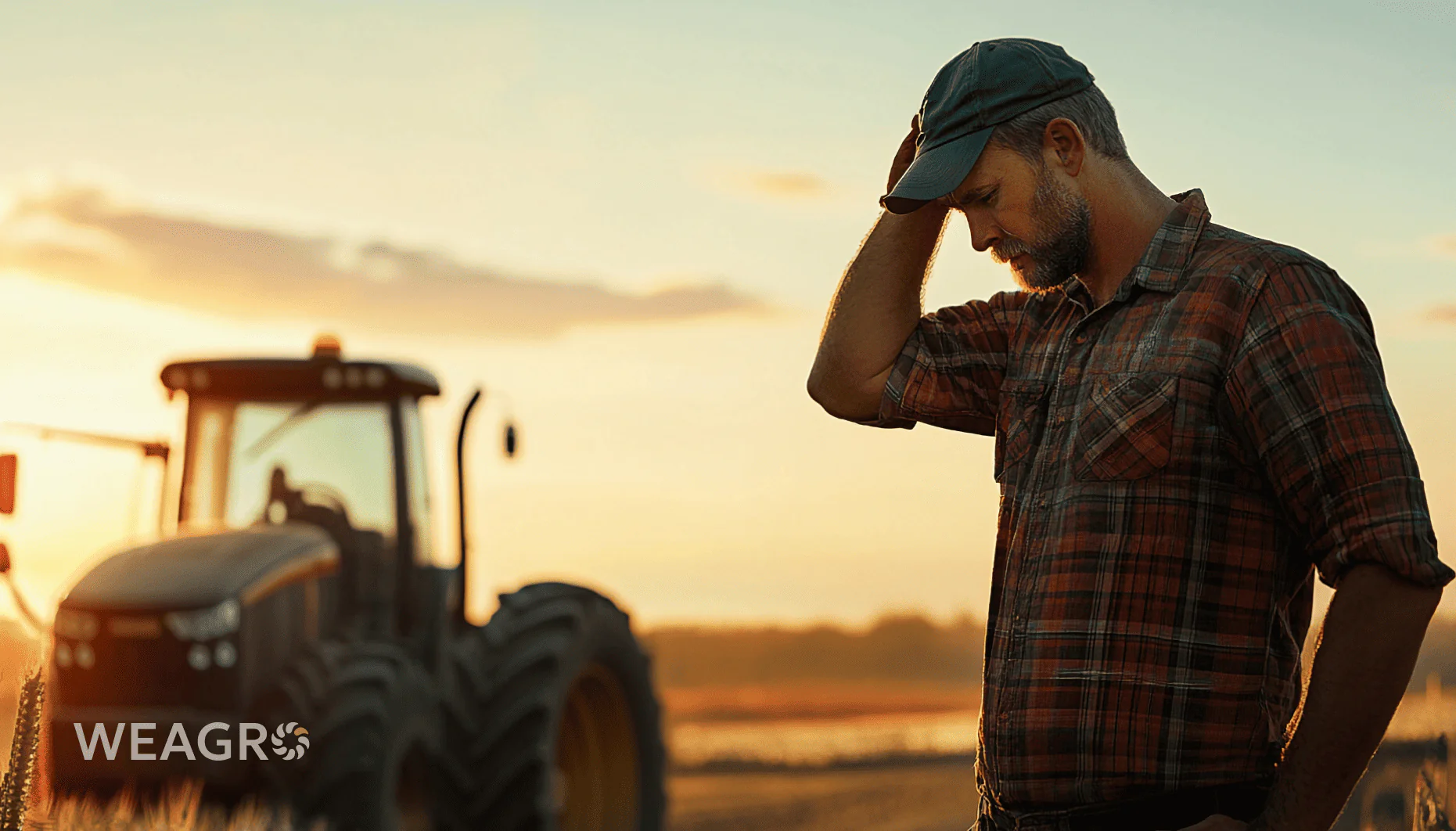Greenhouses are a key element of Ukraine’s agriculture. They ensure stable harvests of vegetables, greens, and fruits throughout the year, regardless of climatic conditions. According to the State Statistics Service, in 2023, Ukraine produced 258.3 thousand tons of vegetables in protected ground conditions on an area of 4.4 thousand hectares. This article will help you understand which type of greenhouse is best suited for specific plants, how to start a greenhouse business, what challenges farmers face, and what solutions exist for these problems.
Types of Greenhouses
In 2023-2024, Ukraine has seen growth in the use of various types of greenhouses. Arch greenhouses are most popular among small farms. However, due to rising electricity and gas prices, many farmers are switching to simple wooden structures with film covering as an affordable option with good thermal insulation. Let’s examine the main types of greenhouses and their characteristics in detail.
Types of Greenhouses by Frame
| Greenhouse Type by Frame | Advantages | Disadvantages |
| Metal | Strength, durability, corrosion resistance, design flexibility | High cost, need for anti-corrosion protection |
| Wooden | Environmental friendliness, high thermal insulation, aesthetic appearance | Shorter service life, size limitations |
| Plastic | Easy installation, corrosion resistance, low cost | Lower strength, limited thermal insulation |
One of the key aspects when choosing a greenhouse is the frame type. The material type affects important factors such as thermal insulation, affordability for the farm, and resistance to weather conditions.
For example, metal frames (steel, aluminum) are strong, durable, and resilient, with high corrosion resistance. Greenhouses of any shape can be made from metal. Steel frames are more expensive and require regular painting and galvanizing.
Wooden frames are the most environmentally friendly of all greenhouse types, providing high thermal insulation that reduces heating costs. Wooden frames require protective treatment against moisture and pests.
Plastic frames are lightweight and convenient for installation. This is the cheapest option that doesn’t corrode or rot. On the other hand, it’s less durable and may deform under wind and snow loads.
Types of Greenhouses by Covering Material
| Greenhouse Type by Covering Material | Advantages | Disadvantages |
| Glass | Maximum transparency, durability, UV resistance | High cost, fragility, heavy weight |
| Polycarbonate | High strength, thermal insulation, lightweight | Loss of transparency over time, high cost, need for protective coating |
| Plastic Film | Low cost, easy installation, transparency | Shorter service life, UV sensitivity, lower thermal insulation |
| Agro-fabric | Excellent ventilation, pest protection, ease of use | Lower transparency, limited service life, sensitivity to mechanical damage |
The choice of covering material is crucial as it affects lighting levels, thermal insulation, and structural durability.
Glass transmits up to 90% of sunlight, allowing plants to grow better. When creating greenhouses as a business, glass covering can serve for decades. Although it’s a relatively expensive, heavy, and fragile material that requires a strong and reliable frame.
Polycarbonate is a lightweight, strong, and durable covering with excellent thermal insulation that reduces heating costs. Over time, it loses transparency and requires UV-protective treatment.
Film is the cheapest type of greenhouse, accessible to many farmers. It’s easy to install, and quality film is sufficiently transparent for normal plant growth. The covering will need to be replaced every 2 years.
Agro-fabric provides good ventilation and reliable protection against pests and overheating, but has lower transparency compared to film or glass. Installation is simple, but the covering needs to be replaced every 3-4 years.
Types of Greenhouses by Purpose
| Greenhouse Type by Purpose | Advantages | Disadvantages |
| Growing | Year-round cultivation, environmental control, efficient space utilization | High equipment costs, high operating expenses, complex maintenance |
| Seedling | Quick plant start, protection from external factors, seed material optimization | Limited space, need for seedling care, high equipment cost |
| Greenhouse | Accelerated plant growth, frost protection, energy efficiency | Summer overheating, high humidity, limited thermal insulation |
Greenhouses are used for various purposes, and depending on their intended use, they may have different designs, materials, and functional capabilities:
- Growing greenhouses are designed for year-round cultivation, ensuring stable harvests regardless of season. They allow precise control of temperature, humidity, lighting, and ventilation. However, this requires expensive equipment (heating, lighting, and ventilation systems) as well as electricity and maintenance costs.
- Seedling greenhouses create ideal conditions for growing healthy and strong seedlings for subsequent transplanting. Such greenhouses provide protection from adverse conditions and high seed germination rates. They typically have limited area, and seedlings require complex care (watering, fertilizing, transplanting). The need for additional lighting systems increases their cost.
- Greenhouse structures create warm and humid conditions for rapid plant growth and high yields. These designs allow extending the growing season and obtaining early harvests. During summer, this type of greenhouse requires additional ventilation and cooling.
Greenhouse Shapes
The greenhouse shape affects the efficiency of space utilization, lighting, ventilation, and overall plant growing productivity. Main greenhouse shapes and their features:
- Arch – the most widespread type of greenhouse business in Ukraine. Convenient design, easy installation, large usable area, load resistance.
- Geodesic – has a spherical shape, ensures even light distribution, high load resistance.
- Spire-shaped – has a high spire to ensure optimal and even light penetration.
- Tunnel – simple and lightweight construction, convenient for installation and maintenance.
- Rectangular greenhouse – an affordable option, simple to build and maintain, provides easy access to plants.
Greenhouses as Business: where to Start
Growing plants in greenhouses is a promising and profitable business that can provide stable income throughout the year. How to prepare to start a successful venture?
Goal Setting, Planning, Legislation
First, you need to decide which crops you plan to grow, for which markets (local or export), and what volume of production you want to achieve. Consider your financial capabilities, available resources, and skills. Conduct detailed market analysis to understand which crops are most needed, what product prices are, who your competitors are, and what their strengths and weaknesses are. This will help you better understand how you can stand out in the market and occupy your niche.
Next, you need to create a business plan that includes all aspects of your business, including financial calculations, marketing strategy, production plan, and risks.
For conducting greenhouse business, it’s important to know and comply with current legislation. Familiarize yourself with regulatory acts governing agriculture and entrepreneurial activity in Ukraine:
- Law of Ukraine “On Entrepreneurship”;
- Law of Ukraine “On Farming”;
- Law of Ukraine “On Environmental Protection”.
Greenhouse Construction
The site should have good lighting, access to water and electricity, and a drainage system. Choose the type of greenhouse that best suits your goals and conditions, considering climatic conditions and site size. Order or build the greenhouse yourself.
Production Process
Choose high-quality seed material adapted to your region’s climatic conditions. Consider disease and pest resistance, yield, and maturation periods. Plan all production stages – soil preparation, sowing, plant care, harvesting, and storage. Provide necessary equipment and materials for plant care (irrigation systems, fertilizers, pest protection).
When funding is insufficient, you can use agricultural installments from the online service WEAGRO. This is an online service that works directly with agricultural product suppliers, allowing farmers to purchase necessary products with payment deferral up to 180 days. The agricultural installment contract is concluded remotely within 30 minutes, requires no collateral, and products are delivered on the day of contract signing.
Marketing and Product Sales
Define your target audience, sales channels (markets, stores, restaurants), and promotion methods (advertising, promotions, exhibition participation). Attract new customers through the internet, social media, and partnership programs.
Profitability Calculation
Conduct financial calculations to assess greenhouse business profitability and determine when it will start generating profits. Consider all expenses (construction, materials, salaries, taxes) and revenue from product sales.
Greenhouses as Business: What to Grow

According to the State Statistics Service, in 2023, the main products for greenhouse cultivation were tomatoes, cucumbers, and sweet peppers, with slightly reduced cultivation of onions and radishes. In 2024, greenhouses as business are still quite profitable, as demand for fresh vegetables, greens, and seedlings remains stable and continues to grow.
Features of growing different crops in greenhouses:
- Vegetables – tomatoes, cucumbers, peppers – have stable demand throughout the year. Optimal temperature for growing vegetables in greenhouses: 20-28°C during the day and 16-20°C at night. For their cultivation, greenhouse types that maintain optimal soil moisture levels, lighting, and good ventilation to prevent fungal diseases are suitable.
- Greens mature quickly, allowing multiple harvests per year, including during cold periods. Optimal growing temperature is 15-20°C. The main requirement for this type of plant is high illumination.
- Seedlings, for example, various types of cabbage (white, red, broccoli, cauliflower), as well as tomatoes and peppers, are in high demand among farmers. Optimal temperature for seedling cultivation is 18-22°C.
Greenhouses as Business in Ukraine
The greenhouse business in Ukraine continues to develop despite challenges faced by producers, especially during wartime. While the industry experienced decline in 2022-2023, throughout 2024, greenhouse vegetable production is returning to pre-war levels.
Challenges of Ukraine’s Greenhouse Business
One of the main problems in maintaining greenhouses as business is high electricity and gas costs for heating and lighting. Their prices constantly rise, affecting production costs and reducing business profitability. High costs for equipment, seeds, fertilizers, and other materials make the business dependent on loans and investments.
Logistics problems, including insufficiently developed infrastructure and high product transportation costs, complicate market access for farmers from remote regions.
One of the main challenges in greenhouse construction is lack of funding and limited access to loans and subsidies. An alternative could be agricultural installments from the online service WEAGRO. The online service brings together verified suppliers of quality agricultural products that can be purchased with payment deferral up to 180 days. The purchase-sale agreement is concluded on the day of approval within 30 minutes using digital signature. The installment requires no collateral.
Prospects of Greenhouse Business in Ukraine
Ukraine has significant potential for exporting greenhouse products. The European Union and CIS countries are the main markets for Ukrainian vegetables and greens, opening new opportunities for Ukrainian producers. The government supports greenhouse farming development through grant programs. Entrepreneurs can receive up to 8 million UAH for building modular greenhouses according to standard projects.









